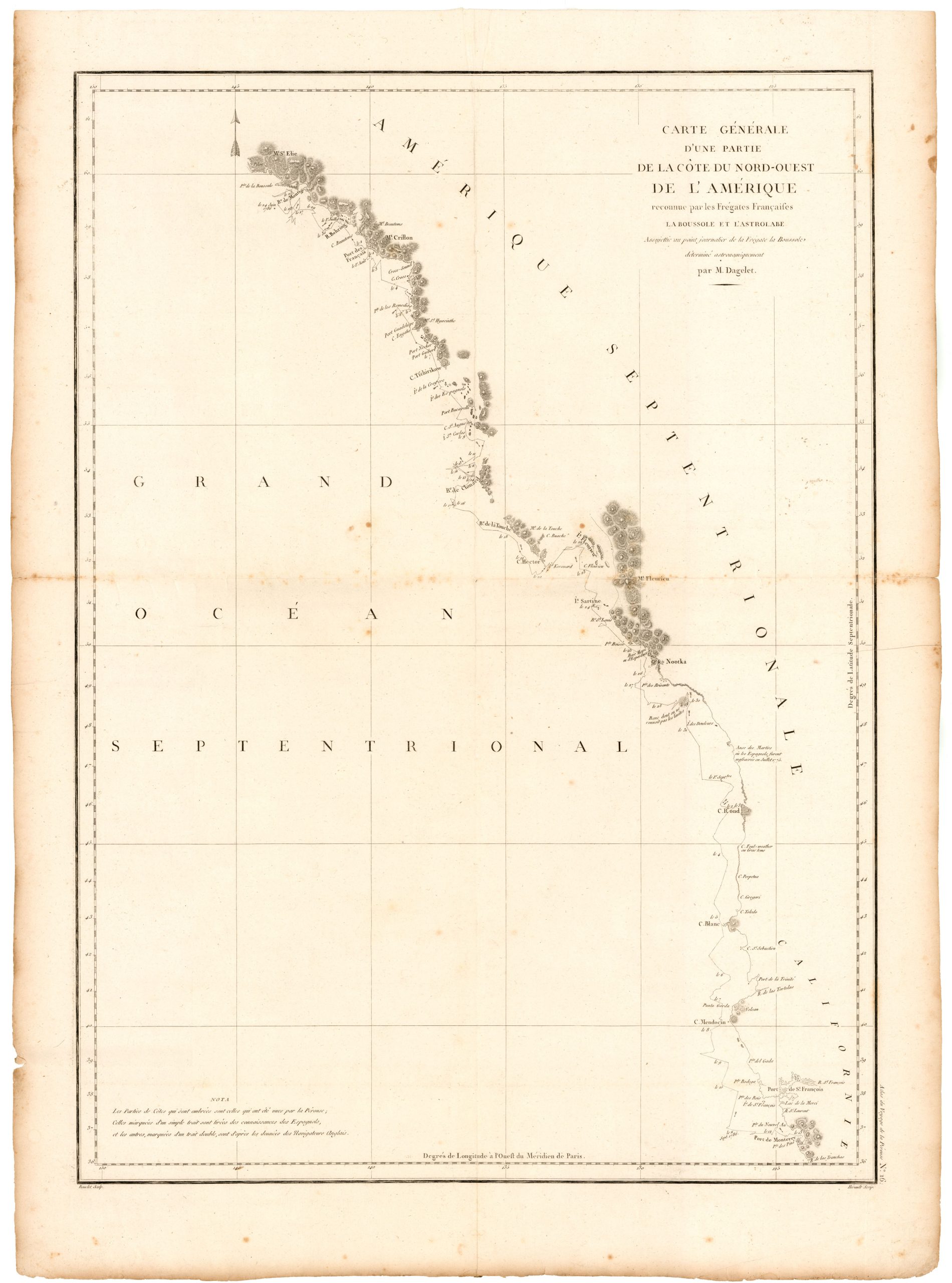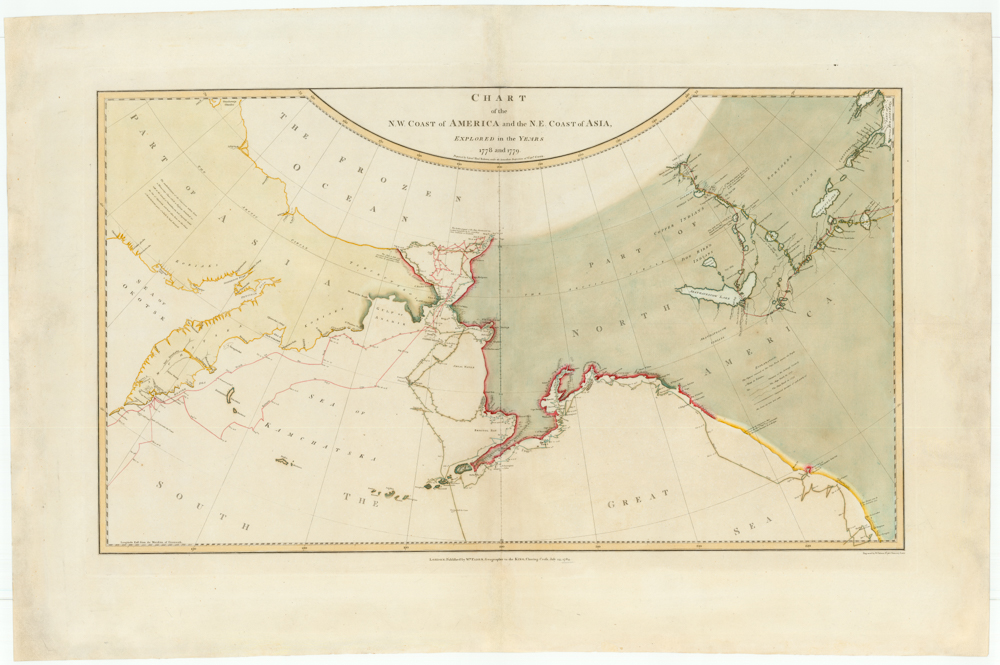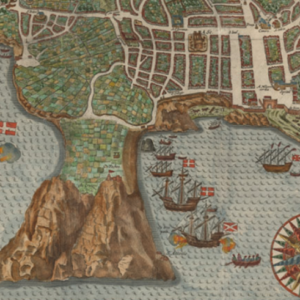The narrative of Captain John Franklin’s first expedition to the Polar North. A landmark of historic travel literature from an icon in the history of Arctic exploration.
Narrative of a Journey to the Shores of the Polar Sea, in the Years 1819, 20, 21 and 22. [First Edition, First Issue]
Out of stock
Description
The first edition, the first issue of the narrative of Sir John Franklin’s first Arctic voyage (1819-22), was published just a year after his return to London.
The Coppermine Expedition’s purpose was to map and explore the northern littoral of the American continent. Franklin was charged with reaching these isolated coastal stretches by crossing overland from Hudson Bay. Once there, he was to survey and chart the coast as it stretched eastward from the mouth of the Coppermine River.
The expedition lasted three years, during which Franklin and his crew surveyed more than 5,000 miles of the Canadian coastline. It was a journey of unimaginable hardship. Over the three years, Franklin lost eleven of the twenty men in his party. Most of them succumbed to starvation and exposure, but there appears to have been at least one murder, and for years there were rumors of cannibalism. Franklin’s book explains how the men depended on lichen (a type of arctic algae-moss) to survive. The men also attempted to consume the leather of their boots, winning Franklin the sobriquet “the man who ate his boots.” Yet despite the severe challenges, the surviving men pushed on with the mission and returned safely to London in 1822, where Franklin was welcomed as a great hero.
The narrative of this incredible journey, published a year after Franklin’s return from the icy shores, immediately became a bestseller and an absolute classic of British travel literature. It contains Franklin’s insights and perspectives on the expedition’s significant events and his considerations of its goals. In addition to the more formal element of his reporting, the work is full of Franklin’s observations on the landscape, its people, climate, and wildlife.
Published in a Quarto format (268 x 215mm), this gorgeous edition of Franklin’s narrative is bound in contemporary half Morocco with a richly gilt spine. Although the hinges have cracked over time, the book is generally in impressive condition for a first edition in its original binding. The tome includes all thirty original plates and four folding maps. Ten of the plates have been hand-colored to enhance viewers’ experience.
Overall, this is an authentic and luxurious edition of this iconic journey into the Arctic wilds. The book is completely intact and in impressive condition.
Context is Everything
During the 1820s, British Rear-Admiral Sir John Franklin (1786 – 1847) led two major expeditions into the Canadian Arctic to map these isolated regions and possibly discover a viable Northwest Passage. In 1845, roughly twenty-five years after his first expedition, Franklin led a third attempt, which ended in catastrophe and the dramatic loss of both ships and their crew. Staying for too long into the season, the HMS Erebus and Terror became icebound off King William Island (Nunavut) and were abandoned by their crews ten months later.
In an attempt to march to safety, the men slowly died of starvation, hypothermia, and scurvy. John Franklin himself died in June of 1847. The loss was a great mystery and tragedy at the time, and several expeditions were mounted in search of Franklin and his crew, including one headed by the other great Polar explorer of the time, John Ross. But they all returned without discovering what had happened to the Erebus and Terror.
In 2007, Dan Simmons published his novel, The Terror, which gave the mystery a new spin towards the horror genre. The book quickly became a bestseller. In 2018, Simmons’ book was turned into a TV drama starring the Irish actor Ciarán Hinds as Captain Franklin. Interestingly, in the years between the Simmons book’s publication and the TV series’s production, a vital clue to piecing the true story together was discovered.
In 2014, an expedition led by Parks Canada discovered the wreck of HMS Erebus in Wilmot and Crampton Bay, near the Adelaide Peninsula. Local Inuit had previously identified the area as a likely location for the wreckage.
Two years later, the wreck of HMS Terror was located on the south coast of King William Island. Archaeological inspection of the wrecks using remote-controlled submarines revealed that especially the Terror had been extraordinarily well preserved. Most of the archaeologists working on the project believe that the HMS Terror sailed to this location through a maze of islands and channels and was anchored here when the ice flows finally bored her down.
Cartographer(s):
Sir John Franklin (16 April 1786 – 11 June 1847) was a Rear-Admiral in the British Royal Navy and a famous Arctic explorer. After serving in the Navy during America’s War for Independence and the ensuing Napoleonic Wars in Europe, he led two expeditions into the Canadian Arctic in 1819-22 and 1825-27.
Following Franklin’s triumphant return from his second voyage, he was knighted by George IV in 1829 and the same year awarded the first Gold Medal of the Société de Géographie of France. Franklin would go on to serve as Lieutenant-Governor of Van Diemen’s Land from 1839 to 1843, before launching his third and final Arctic expedition in 1845. During this fateful voyage, Franklin’s ships became icebound off King William Island in what is now Nunavut. Franklin would die here in June of 1847. The icebound ships were abandoned ten months later and the entire crew died from starvation, hypothermia, and scurvy.
John MurrayJohn Murray (27 November 1778 – 27 June 1843) was a Scottish publisher and member of the John Murray publishing house based in London.
Condition Description
30 plates, 10 of which are hand-colored, 4 folding maps. Includes Botany index.
Contemporary half morocco, spine richly gilt (hinges cracked).
Provenance: Heritage Bookshop; then Martin Greene Library (Christie’s Dec. 2017).
References
Abbey Travel 635; Arctic Bib. 5194; Hill 635; Peel 80; Lande 1181; Sabin 25624; TPL 1248.





